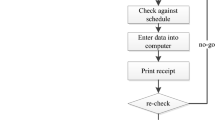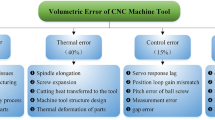Abstract
A Problem of relevant interest to some industries is that of obtaining optimum two-dimensional layout. To solve this proviem, one is given a number of rectangular sheets and an order for a specified number of each of certain types of two-dimensional regular and irregular shapes. The aim is to cut the the shapes out of the sheets in such a way as to minimize the amount of waste produced. A DCS (Distributed Control System) is an integrated system which applies the decentralization concept to a control system handling both sequential and analog control. A DCS performs many operations such as data gathering, data processing, data storing and monitoring the operatin conditions for the operator. IN this paper, we propose a genetic algorithm based on rotation parameters from which the best pattern of layout is found as well as a layout method for better performance time. A DCS for the plate cutting process system, which is performed by a virtual system, is also identified.
Similar content being viewed by others
References
Adamowicz, M. and Albano, A., 1976, “Nesting Two-Dimensional Shapes in Rectangular Modules,”Computer-Aided Design, Vol. 8, No. 2, pp. 27–33.
Albano, A., 1977, “A Method to Improve Two-dimensional Layout,”Computer-Aided Design, Vol. 9, No. 1, pp. 48–52.
Albano, A. and Sapuppo, G., 1980, “Optimal Allocation of Two-Dimensional Irregular Shapes Using Heuristic Search Method,”IEEE Transactions on System, Man and Cybernetics, pp. 242–248.
Bounsaythip, C. and Maouche, S., 1996, “A Genetic Approach to a Nesting Problem,”Proceedings of the Second Nordic Workshop on Genetic Algorithms and their Applications (2NWGA), pp. 89–104.
Davis, L., 1996,Handbook of Genetic Algorithms, Van Nostrand Reinhold, New York, pp. 1–53.
Gen, M. and Cheng, R., 1997,Genetic Algorithms & Engineering Design, Wiley, New York, pp. 1–41.
Gilmore, P. C. and Gemory, R. E., 1965, “Multistage Cutting Stock Problems of Two and More Dimensions,”Oprn. Res. Vol. 13, pp. 94–120.
Gilmore, P. C. and Gemory, R. E., 1966, “The Theory and Computation of Knapsack Functions,”Oprn. Res. Vol. 14, pp. 1045–1074.
Lamousin, Waggenspack, and Dobson, 1996, “Nesting of Complex 2-D Parts Within Irregular Boundaries,”ASME, Journal of Manufacturing Science and Engineering, Vol. 118, pp. 615–622.
Michalewicz, M., 1992,Genetic Algorithms +Data Structures = Evolution Programs, 2nd Edition, Springer-Verlag, New York, pp. 93–184.
Sarin, S. C., 1983, “Two-Dimensional Stock Cutting Problems and Solution Methodologies,” ASME,Journal of Engineering for Industry, Vol. 105, pp. 155–160.
Watanabe, G. and Ono, T., 1997, “Determination of Cutting Layout of Two-dimensional Pattern by Genetic Algorithms,”IEEE of Japan Transactions, Vol. 117, No. 3. pp. 356–363.
Author information
Authors and Affiliations
Corresponding author
Rights and permissions
About this article
Cite this article
Kim, H. Development of a plate manufacturing CAD/CAM program for a optimal layout and distributed control system. KSME International Journal 14, 1089–1103 (2000). https://doi.org/10.1007/BF03185063
Received:
Revised:
Issue Date:
DOI: https://doi.org/10.1007/BF03185063




